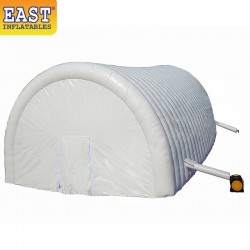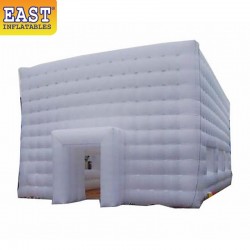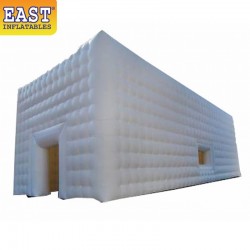31 Jul


Inflatable tents work by using air-filled beams as structural supports instead of traditional poles. Here’s a detailed breakdown of how they function:
Components of Inflatable Tents
- Air Beams: These are the main structural elements of the tent, made from durable, air-tight materials that can be inflated to create a rigid framework.
- Valve System: This is used to inflate and deflate the air beams. Valves are designed to prevent air from escaping once the beams are inflated.
- Tent Fabric: Typically made from waterproof and durable materials like polyester or nylon, similar to traditional tents.
- Pump: Either manual or electric, used to inflate the air beams.
How Inflatable Tents Are Set Up
- Spread the Tent: Lay the tent out on the ground in the desired location.
- Inflate the Beams: Use the pump to inflate the air beams through the valves. This process can take a few minutes, depending on the size of the tent and the type of pump used.
- Shape and Adjust: As the beams fill with air, they will begin to take shape and lift the tent off the ground. Adjust the tent fabric as necessary to ensure it’s properly aligned.
- Anchor the Tent: Secure the tent with stakes and guy lines to ensure stability, especially in windy conditions.
Stability and Durability
- Stability: Once inflated, the air beams are rigid and provide strong support, comparable to traditional tent poles.
- Durability: The materials used for the beams and tent fabric are designed to withstand punctures and harsh weather conditions. Some tents come with repair kits for minor punctures.
Advantages of Inflatable Tents
- Ease of Setup: Inflatable tents can be set up quickly and easily by a single person, making them convenient for solo campers or families.
- Compact Storage: When deflated, these tents pack down to a relatively small size, making them easy to transport and store.
- Safety: There are no rigid poles that could potentially break and cause injury.
Disadvantages of Inflatable Tents
- Pump Dependency: The need for a pump means an additional piece of equipment to carry and maintain.
- Puncture Risk: While durable, inflatable beams are still susceptible to punctures. Repair kits can address minor damages, but larger punctures might require professional repair.
- Cost: Inflatable tents can be more expensive than traditional pole tents due to the advanced materials and technology used.
Packing Up
- Deflate the Beams: Open the valves to release the air from the beams.
- Fold and Roll: Once deflated, fold the tent and roll it up for compact storage.
- Store: Place the tent and pump in the storage bag for easy transport.
Inflatable tents offer a modern, convenient alternative to traditional tents, particularly valued for their quick setup and ease of use.




Leave a Comment